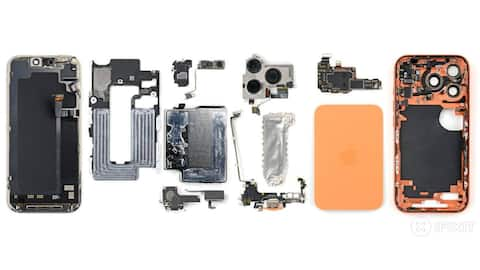Teardown reveals why Apple's iPhone 17 Pro scratches easily
What's the story
The latest teardown of Apple's flagship iPhone 17 Pro by iFixit has revealed some interesting insights about its design and functionality. The disassembly process, which involved prying and suction cups, showed that Apple has ditched the dual-entry design. This change means that now only the back Ceramic Shield can be replaced while other repairs require removing the display first.
Scratch issue
Addressing the 'scratchgate' controversy
The teardown looked into the "scratchgate" controversy surrounding the iPhone 17 Pro. A level 4 Mohs hardness test can scratch flat surfaces of the iPhone 17 Pro without peeling the anodized layer. On the camera plateau, where the anodization sits on another anodized layer instead of aluminium, the layer can flake off—an effect called 'spalling.' The unsupported anodized layer is brittle and can pull away, revealing aluminum, while flat areas handle scratches without flaking.
Battery design
New battery design with pre-adhered batteries
The teardown also revealed that the iPhone 17 Pro has a new battery design. The repair team found 14 new Torx Plus screws after removing the battery, which is attached to a plate. This plate effectively makes it a battery tray, making it easier to apply adhesive and possibly allowing Apple to sell pre-adhered batteries as spare parts.
Internal components
'Sandwiched' logic board in the top section
The teardown revealed a sandwiched logic board, located in the top section of the phone. It has a bit more space due to an expanded camera bump or "plateau." The upper assembly's front sensor array is removed by unplugging two press sensors while three cables hold the rear camera section in place.
Cooling system
First-ever vapor chamber cooling system on an iPhone
The iPhone 17 Pro also comes with a new vapor chamber cooling system, a first for any iPhone model. This thermal management technique uses liquid in a reservoir to absorb heat from connected chips. The chamber is located on top of the A19 Pro and was seen on thermal cameras pulling enough heat away to prevent throttling, unlike its predecessor, the iPhone 16 Pro Max.
